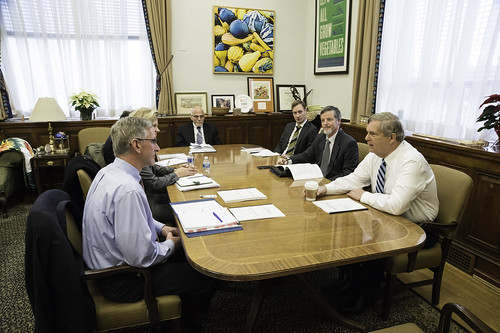
American agriculture today is a complex web of producers, processors, and marketers all working to produce a safe and nutritious food supply and serve the needs and wants of consumers here in the U.S. and all across the world. As people have become more interested in what they eat and where their food comes from, the wide range of consumer preferences has led to a highly diversified marketplace.
Some consumers shop based solely on price, and others are drawn to the latest products they find in their grocery stores. Some try to buy locally produced food, and others seek out organic products. Because our farmers grow crops to meet all preferences, they often need to take special precautions, such as keeping their crops separated from their neighbor’s production, and ensuring their harvest is diverted into the correct product stream. This can be a challenge for those that share the land, machinery, or shipping equipment with their neighbors. They need to find a way to produce crops with the specifications their markets require, while also coexisting with nearby farms growing products for other markets.
Today I received “A Framework for Local Coexistence Discussions (PDF, 921 KB),” an important report from USDA’s Advisory Committee on Biotechnology and 21st Century Agriculture (AC21), which offers a framework for farmers and communities to convene discussions around farm management activities. The new framework established in this report extends beyond issues around GMO production to a wide range of topics that farmers can discuss with their neighbors. The report provides information and guides discussions to resolve local issues that may arise when neighboring farms produce different products. The report can also alert farmers of new production opportunities for particular markets that may come with specialized requirements.
The AC21 is USDA’s longstanding advisory committee that takes on big-picture issues around the long term implications of the use of biotechnology on agriculture and the work of USDA. I reconvened the committee and asked the members to focus on the challenges of farmers coexisting with one another to produce an increasingly broad range of products for consumers. Today’s report is the second one the committee has delivered to me on this subject and was endorsed by the majority of AC21 members.
Sections of the report can also be used as stand-alone documents, helping states and communities meet their coming production challenges. I strongly support their use, and USDA will begin distributing them to potential users and partners. The report also provides an update on some of the challenges and opportunities that lie ahead for a rapidly diversifying and changing marketplace. These can drive changes in practices on farm and in food production chains.
I want to thank the AC21 Chair, Pennsylvania Agriculture Secretary Russell Redding, AC21 members, and USDA staff for their commitment and perseverance in tackling a complex issue. This report demonstrates that respectful dialogue offers the best path forward when challenges arise.

